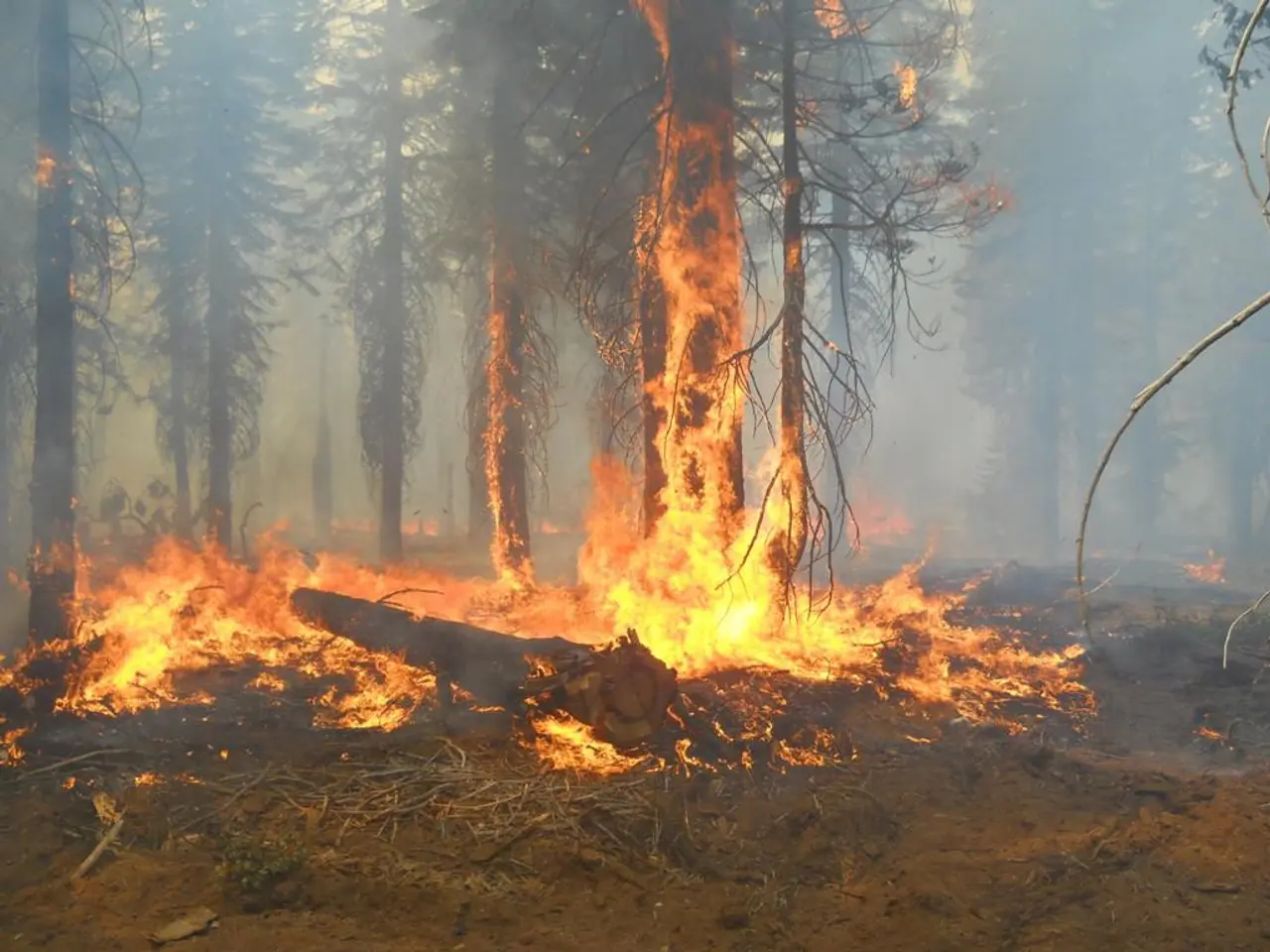"Forest Fires Extinguished in Zabaykalie Region": 13 blazes put out in the region
## Siberian Forest Fires Update
As of the latest reports, the ongoing wildland fires in Siberia continue to pose a significant challenge. The fires have been active in various districts across eastern Russia, with a total of 21 active fires currently burning in Akshinsky, Alexandrovo-Zavodsky, Borzinsky, Kyirinsky, Nershinsky, Tungiro-Olekmin, Tungokochensky, Uletovsky, Hiloksky, and Chitinsky districts [1].
The good news is that 13 districts have seen progress, with fires having been extinguished in a combined area of 1,800 hectares [2]. Moreover, no new active fires have been reported beyond the initial 21 [3].
In the districts of Sretensky, Tungiro-Olekmin, Tungokochensky, and Hiloksky, no new fires have been reported, and the 9 fires that were previously localized continue to be contained, covering a total area of 220,000 hectares [4].
The firefighting efforts involve a substantial workforce, with over 1,200 personnel working tirelessly to control the blazes [5]. This team comprises forest firefighters, aviation firefighters, volunteers, and contractors.
Aircraft and helicopters are also being utilised to monitor the fires in the region [6]. However, no new information about the size or location of the fires has been reported in the recent updates [7].
It's important to note that these fires are part of a broader trend of increasing boreal wildfires across the Northern Hemisphere, including Canada and Alaska [8]. The environmental impact of these fires is significant, with short-term cooling effects due to aerosols in smoke but long-term warming impacts due to carbon emissions and permafrost thaw [8][9].
The frequency and intensity of these fires are linked to climate change, with increasing temperatures and drought conditions exacerbating fire risks [8][9]. As the situation continues to evolve, efforts to control the fires and mitigate their impact on the environment remain a priority.
[1] Regional Ministry of Nature's Telegram channel [2] Regional Ministry of Nature's Telegram channel [3] Regional Ministry of Nature's Telegram channel [4] Regional Ministry of Nature's Telegram channel [5] Regional Ministry of Nature's Telegram channel [6] Regional Ministry of Nature's Telegram channel [7] Regional Ministry of Nature's Telegram channel [8] National Geographic (2022) https://www.nationalgeographic.com/science/article/siberia-wildfires-climate-change-russia [9] Science Direct (2020) https://www.sciencedirect.com/science/article/pii/S0301479720305837
The ongoing wildland fires in Siberia, a part of the increasing boreal wildfires across the Northern Hemisphere, belong to the field of environmental science, specifically wildfire science. The environmental impact of these fires, including short-term cooling effects due to aerosols in smoke and long-term warming impacts due to carbon emissions and permafrost thaw, is a significant concern within the domain of environmental science.








